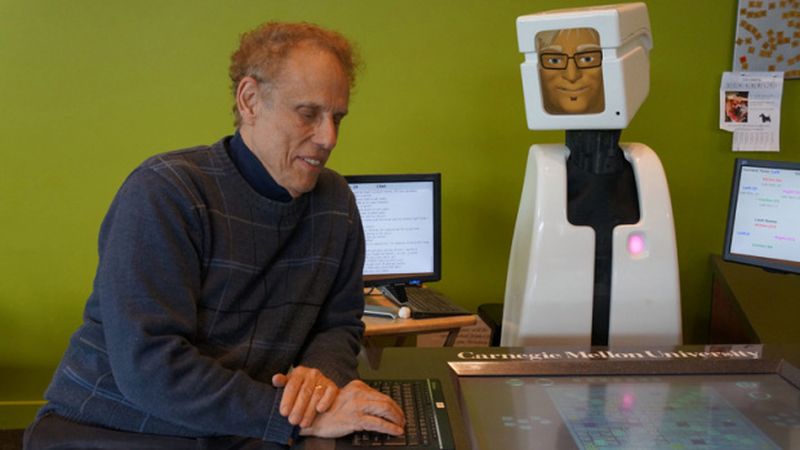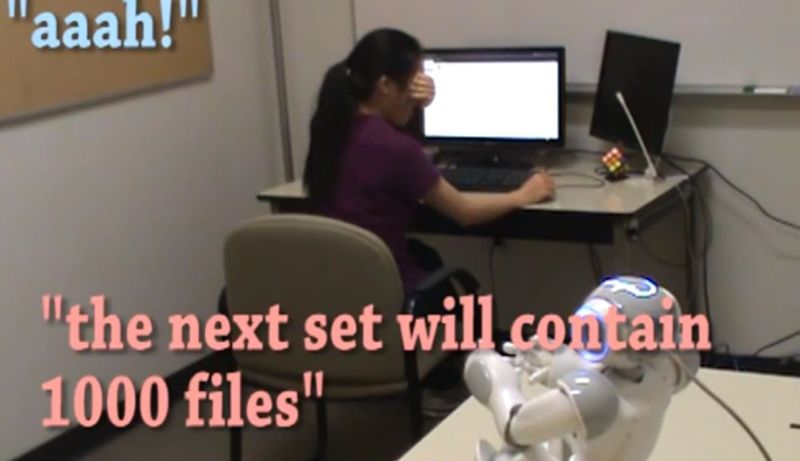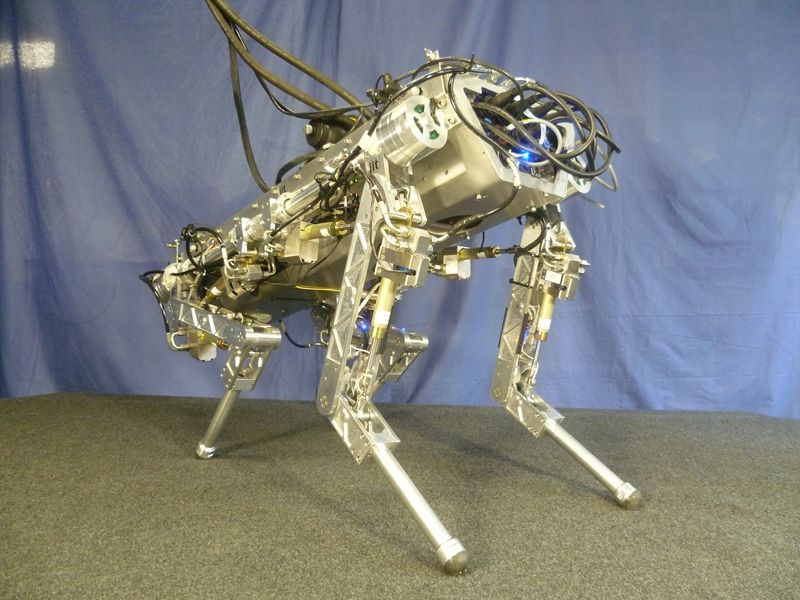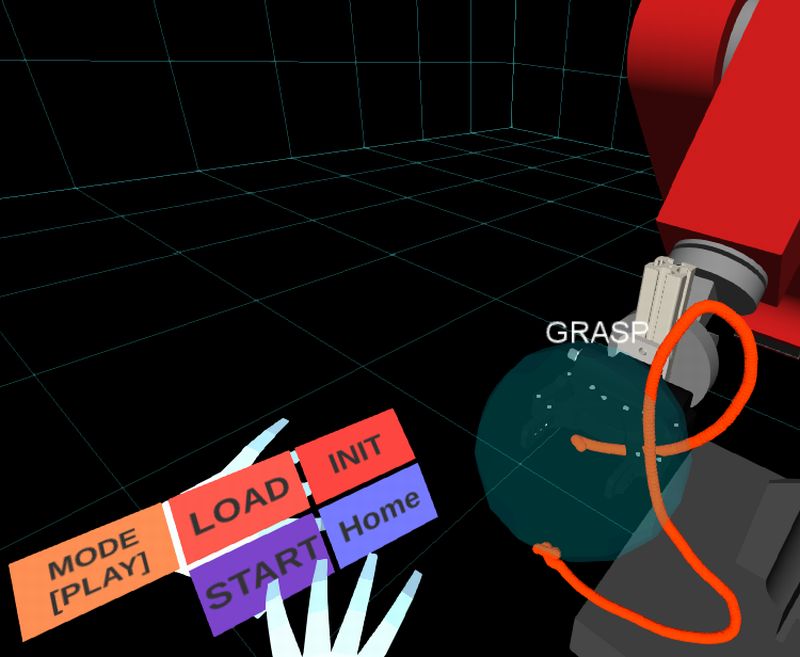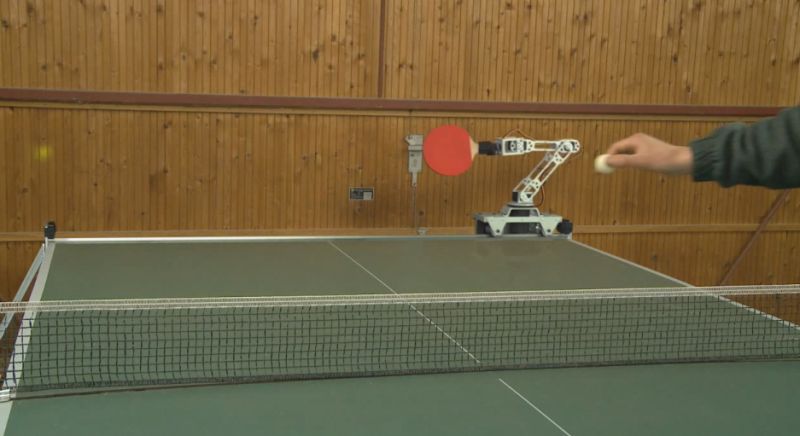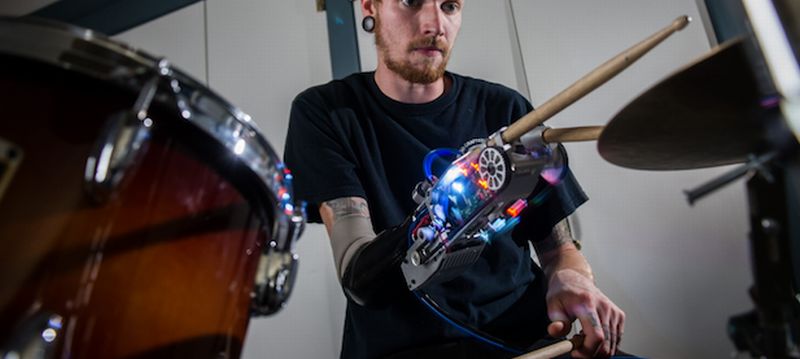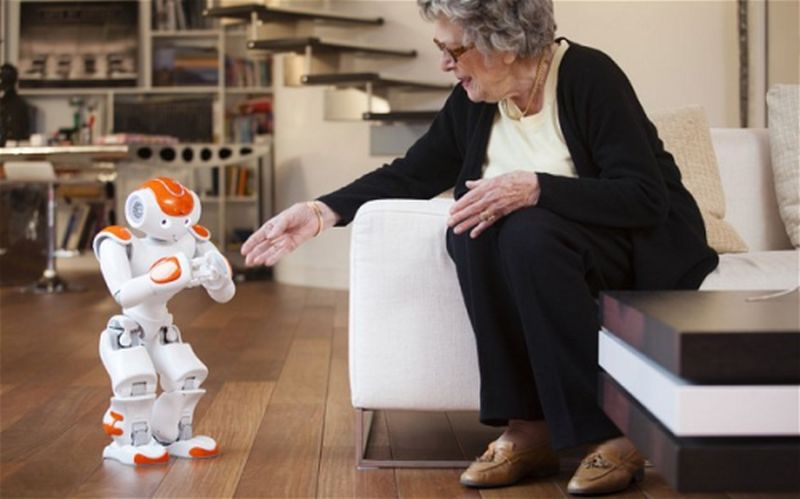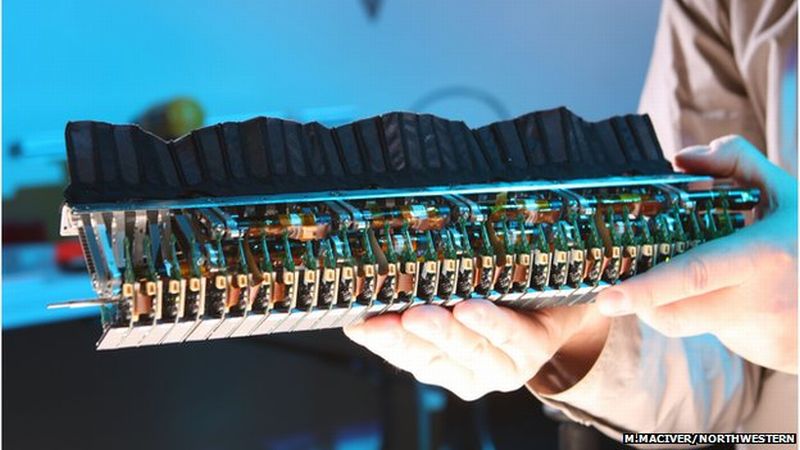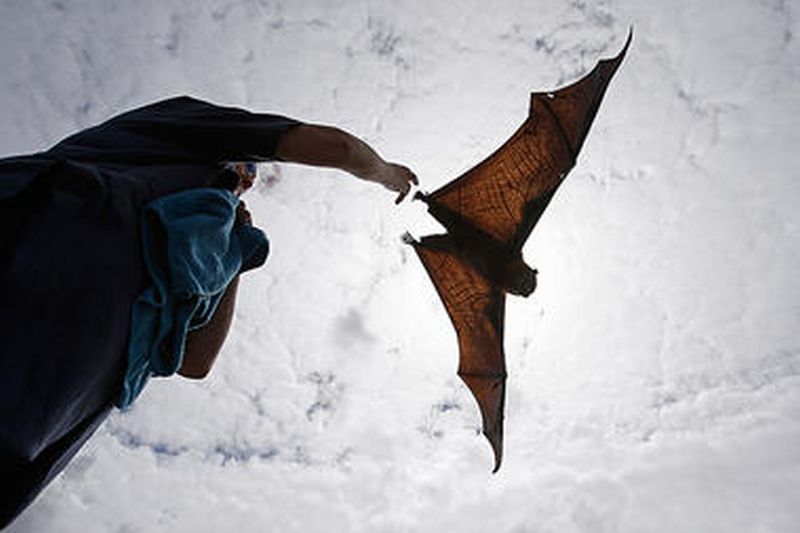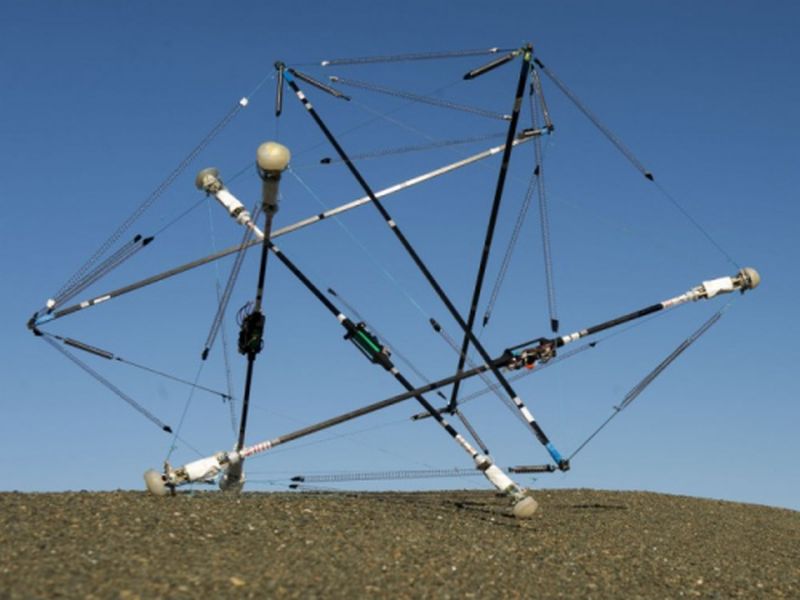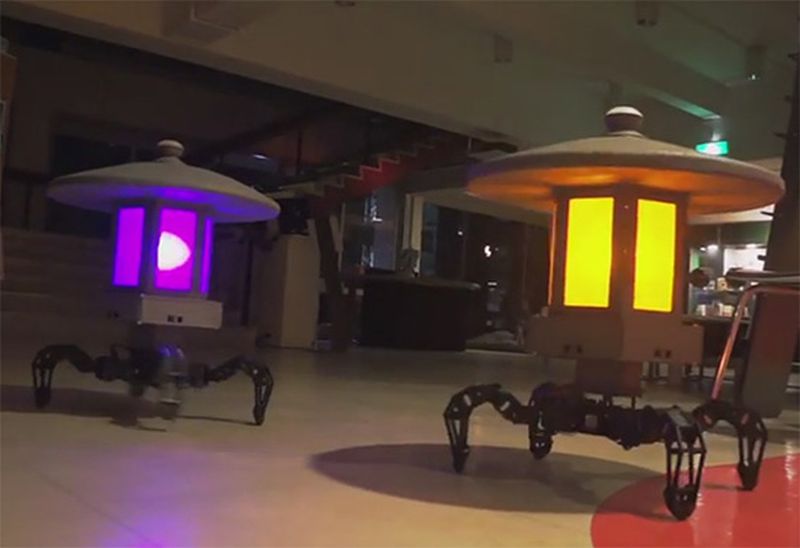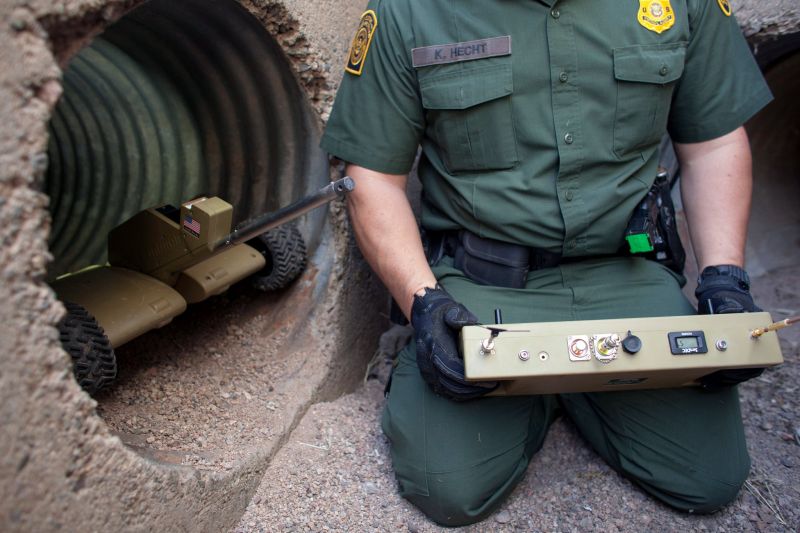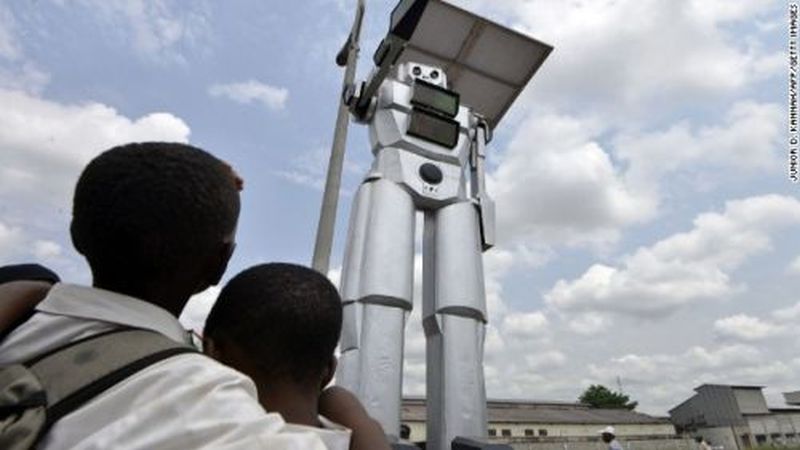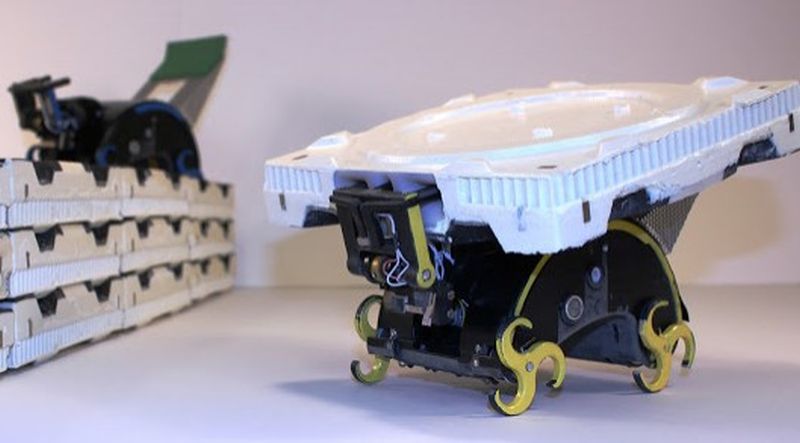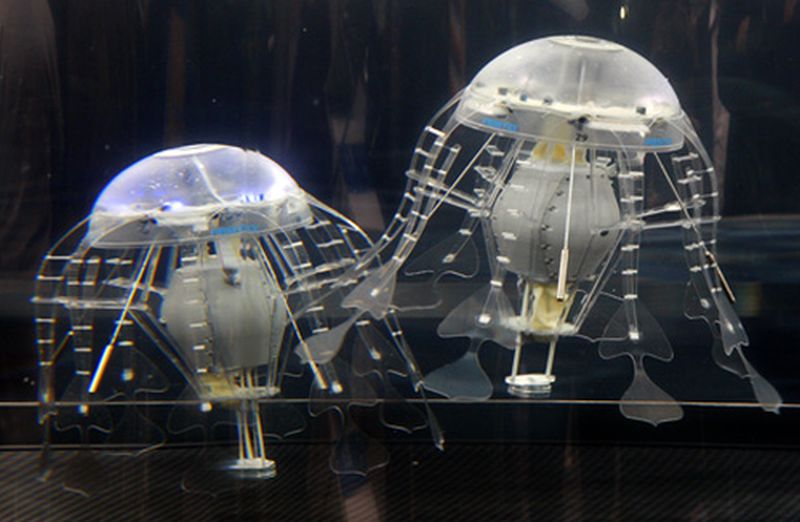In the computer science lounge at Carnegie Mellon University, sits Victor, a scrabble playing robot. Unlike other robots who are designed to be the masters of the game, Victor is a below average player and just like humans, the bot is excited when it wins and sulk on losing. But be careful, the bot can be really nastier at times and can talk a lot of trash.
Read MoreTag: robotics
Humans Might Welcome The New Robot Overlords: An Obedience Study
How would it feel working under a ‘robo boss’, constantly pecking on top of the head, reminding the amount of work that is still left. Many would feel frustrated and might leave but there would be some, who might like to finish the task without questioning. In an interesting experiment, performed by the Human-Computer Interaction Lab at the University of Manitoba in Winnipeg, Canada, revealed the responses that were received by working under a robotic supervisor. Task that was assigned to humans was extremely monotonous which of course became boring…
Read MoreHyQ: The Most Versatile Quadruped Robot
With its first launch, HyQ, the brainchild of Italian Institute of Technology had already conquered how to manipulate the terrains. Now the quadruped robot has resurrected but with more tricks than before. Claudio Semini, the lead researcher claimed that the ‘second coming’ of HyQ is sodden with wide variety of motion skills that would help the bot in facing the dynamically changing terrain. Initially, the bot was designed in terms of reactive behavior, the mode that helped it from recovering from huddles but this time, the focus is kept on making…
Read MoreIVRE: Human Machine Virtual Collaborative Systems
Getting work done through robots is no more a challenging task, with the continuous progression in technology, more and more machines are being designed keeping in mind the safety factor which still reigns supreme when interacting with a machine. Yet we are too far from two equally important aspects, which if conquered, might thoroughly revolutionize robotics, and they are – consciousness and self-awareness. In an attempt to reach fluency in human-robot interactions, researchers at the Johns Hopkins’ Computational and Interactive Robotics Laboratory have come up with a simulated setting, which…
Read MoreThe UHTTR-1: Hoffman’s Table Tennis Robot
Ulf Hoffman, a hobbiest engineer has designed the table tennis robot, a bot that plays tennis but with one hand. The team has named it the UHTTR-1. Within no time, the machine reverts the ball after servicing. Its ability to respond rapidly is due to its efficient servo motors and light weight aluminum construction. At the moment, the bot works in passive mode but the engineer claim to tune it to work for the next higher level and envision to integrate other higher dimensional skill set. Unlike Watson, it is…
Read MoreRobots Might Perform At Live Concerts: Prosthetic on the Sticks
Robots got advanced and sophisticated in the last few decades after all, they are capable of performing various tasks with precision making our life all the more simpler. Now, Gil Weinberg Professor at Georgia Tech Center for Music Technology has designed an innovative robot that can create music of its own. The bot is not the one that just plays the music instead it has been designed to create music by first ‘carefully’ listening a song or melody and then improvise new tunes. Imagine how interesting it would to have…
Read MoreResearchers Conceptualizing An In-built Privacy Design: Humanoids
With an increasing use of robotics in various fields, more and more vital information are being transferred to these bots. Sharing information with these machines might seem grandeur but its brings along the challenge to safeguard the information stored in the robots from being hacked or being shared by others. British researchers to explore different ways of preventing these stored data are carrying out a three-year project worth 2 million pound.
Read MoreGhost Knifefish Inspired Autonomous Underwater Vehicle: Biomimicry
In an attempt to design an underwater vehicle that can go into the depths of ocean, which are not, accessible or not safe for humans to dive in, scientists are studying the Ghost knifefish method of locomotion. The fish are known to hunt in the murky water of the Amazon basin with precision and to sense the environment, rely on the current that they pass through the water and whirl their long fin for smooth motion to move both horizontally (forward and backward) as well as vertically.
Read MoreBiomimicry: Robotic Bats Might Fill the Skies Soon
According to a recent study, the manner in which bats flap their wings could actually be the source of inspiration for the upcoming designs of flying robots. The researchers investigated the way the fruit bats made use of their wings for manipulating the air around them. By developing the correct understanding of the functioning of these processes in nature, the engineers could practically come up with the design of small flying robo machines called the micro air vehicles. According to Danesh Tafti, from Virginia Tech, bats comprise of varied shapes…
Read MoreSuper Ball Bot: NASA’s Latest Space Rover
The National Aeronautics and Space Administration (NASA) keep coming up with new era robots that can be sent to space for exploration. There are certain limitations in each design such as time taking research, clumsy motions and prone to damage. Therefore, NASA is trying to design a bot that can transform the traditional way robots perform work assigned to them here on our planet or in the space. They are aiming to build a Super Ball Bot, which looks more like a motor fitted in between a mesh of rods…
Read MoreToro-Bots: The Movable Garden Lamps in Your Garden
We all have seen beautifully maintained gardens with flowers, plants, colored pots, lamps statues and so on. But I am sure no one might have seen a garden with robots moving around and also taking care of it. The adorable looking robots with lights on the top and too many limbs are known as Toro Bots, created by the Japanese, are basically garden lamps that are capable of moving around in your garden of their own. And they are surely going to turn heads and attention towards your garden.
Read MoreMachines Would Guard Drainage Tunnel: Fight Against Drug Peddlers
Most of us may not be aware that the drainage system that lay beneath our city and carry sewage, are also being actively used for drug smuggling. The underground system that runs between the Mexico and the United States are among the frequently used routes by the drug smugglers. Till date officers from U.S. Border Patrol were responsible to keep an eye on these activities going inside these filthy drains. These officers guarding the city used to crawl through these rotting, smelling puddles and completely counting on their instinct to…
Read MoreOn Road Traffic Controller: Humanoids Take Over Streets
Robotics is one such area, which many people think can pose threat to human jobs. Bots could be seen everywhere, from automatizing work in mega factories to performing daily household chores. For instance, after the bar tending robot, now we would be witnessing a machine taking the charge of a traffic cop.
Read MoreTermites Inspire Crew of Tiny Autonomous Bots: Biomimicry
Inspired from termites, which are usually known for causing damages to the buildings, researchers from Harvard University have created a crew of tiny robots that are designed to work autonomously. The bio-inspired robots termed as TERMES can work without any central supervision and can carry bricks to construct structures as towers, castles and pyramids.
Read MoreQuest To Design Jellyfish Robot: Propulsion Movement Under Research
Animals have always inspired our scientists, whether it is in the field of medicine or robotics. Robots based on animal movement are not a new concept because animals perform activities more efficiently and proficiently, that are not yet achievable in our robots. In another animal inspired, jellyfish robot, researchers studied different animals from small creatures like moth to the largest like humpback whales, to understand how animals moved through water or air, with minimal transport cost. They discovered that the secret about their movement lies in the way these animals…
Read More
